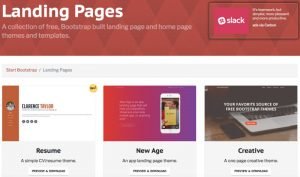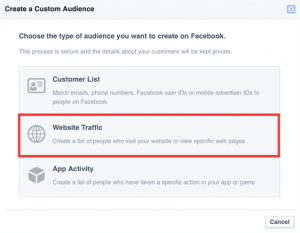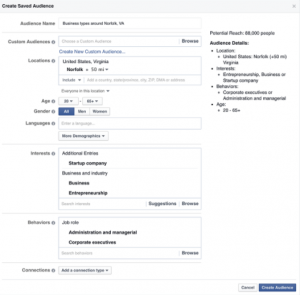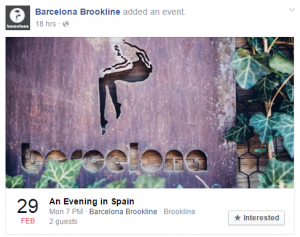The math is simple – the number of clients grows, and your business grows. But whatever service you provide, the toughest part of being an entrepreneur is finding new clients. I’ve written and spoken a lot about how I am a fan of Facebook advertising. But I don’t just use it to help my clients – it’s a great tool for my agency as well to find new clients. Even if you hate Facebook, you can’t deny the opportunities it offers to young brands and freelancers.
I remember the first time I launched a Facebook campaign years ago. At the end of it, I was so disappointed that I made it a point to stick to Google AdWords. But with time I realised – the problem was with the campaign, not Facebook Ads. I chose an objective, entered in my credit card details, set a budget, and thought I could easily buy client leads. A lot of entrepreneurs end up making the same mistake. In this blog, I’ll talk about the right way to get new clients – using both organic and inorganic reach.
Facebook’s Personality
For businesses, the most important thing to understand about Facebook is its personality type. Unlike Google, it’s passive aggressive in nature. On Google AdWords, people actively search for products and services. They’re using keywords to find companies like yours. If I create a campaign targeting “hotels in New Delhi” (I actually did that when Google just came on to the scene!), then whoever sees my ad is a part of my target group.
But Facebook, like other social media platforms, shows ads to people who aren’t necessarily looking for your service. The catch is that it knows so much about the audience that you can still target them. It lets you create campaigns targeting audience who have liked or shown interest in tourist places in Delhi.
The people who see these ads would want your services, they’re just not in the frame of mind to avail these services. They’re on Facebook to see what their friends are up to. They’re not business owners looking for agencies, but regular people like you and me.
This is the most important thing that entrepreneurs often forget.
What Are Your Goals?
Of course, the basic goal is to earn new clients. But like I said above, people are only going to passively click on your ad – if they get interested in the first place. Your standard client pitch won’t work. You need to propose something totally different. Like I mentioned in my last blog, strive to create a relationship with your potential clients.
Scoring leads
Before you launch the ad, you’ll just need to create a simple landing page with embedded email opt-in forms. Next, integrate an email marketing platform. One of my favourites is MailChimp. The idea is to run ads with your business page, driving traffic towards the landing page, and getting visitors to leave their contact details.

Before creating the actual ad, it’s important to create the lead magnet first. My preferred lead magnets are Email courses, Seminars or Webinars, Whitepapers and Video series.
The aim is to get people to stop looking at their friends’ vacation photos and to click on your offer. The great thing about Facebook ads is that they integrate seamlessly with the newsfeed.
Start by going to the Ads Manager and choosing “Lead generation” as the ad objective.
In the “status” part of the ad, write about something that touches the potential client’s nerve.
Something like, “Some hoteliers struggle to fill hotel rooms, while others charge $100 per night. Find out how…”
In the image, go for as little text as possible. Your clients don’t want to come across a billboard in the middle of their newsfeed, so keep it subtle. In my experience, images with people in them work best.
In the “Title” and “Description” section, simply talk about what you’re offering in the lead magnet.
Targeting Options
This is the crux of Facebook lead generation. It’s not straightforward at all like AdWords. If you’re a photographer in Toronto, you just have to buy a combination of keywords like “agency photographer” on Google and make it run to people in and around Toronto.
Facebook, on the other hand, gives you of interesting targeting options.
To start with, open the Facebook Ads Manager and click on Audiences. You can either use “Custom Audiences”, which are CSVs of email IDs you already have, or “Lookalike Audiences”, which you can use to target people who are mutual friends or similar to people in your custom audience.

You can also remarket to people who have already visited your website but didn’t convert.

Interest Targeting will help you target people who “like” certain pages, are of a particular age and gender, and who live in a particular area. Experiment with different likes and interests to find the perfect audience for your campaign.

You don’t need to spend truckloads of money to get leads. It’s a very low acquisition cost when compared to other promotion models.
If you don’t want to run an ad, Facebook still helps you connect with potential clients.
Add a Networking Group
Clients love networking. They love connecting with their peers and talking about their business. Why not create your own networking group? The key here will be to keep sending out interesting and relevant content and updates.
Create a Facebook Event
If you’re already organising an event or a seminar, promote it by creating and sharing a Facebook event. Even if you’re hosting an online event like a webinar, use a Facebook event to promote it and attract new clients.

Use Facebook Offers
The Facebook Offers feature allows you to create coupons that can be used both online and offline for a small fee. Facebook will show these coupons to people who don’t follow your page. You can use this link and promote it elsewhere.

Use Facebook the right way, and you’ll be to get new clients on board EVERY MONTH. The only thing left now would be to keep those clients!
Opinions expressed here are opinions of the Author. Influencive does not endorse or review brands mentioned; does not and cannot investigate relationships with brands, products, and people mentioned and is up to the Author to disclose. Accounts and articles may be professional fee-based.

